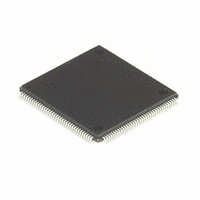MC68HC16Z1CPV25 Freescale Semiconductor, MC68HC16Z1CPV25 Datasheet - Page 135

MC68HC16Z1CPV25
Manufacturer Part Number
MC68HC16Z1CPV25
Description
IC MPU 1K RAM 25MHZ 144-LQFP
Manufacturer
Freescale Semiconductor
Series
HC16r
Datasheet
1.MC68HC16Z1VEH16.pdf
(500 pages)
Specifications of MC68HC16Z1CPV25
Core Processor
CPU16
Core Size
16-Bit
Speed
25MHz
Connectivity
EBI/EMI, SCI, SPI
Peripherals
POR, PWM, WDT
Number Of I /o
16
Program Memory Type
ROMless
Ram Size
1K x 8
Voltage - Supply (vcc/vdd)
2.7 V ~ 5.5 V
Data Converters
A/D 8x10b
Oscillator Type
Internal
Operating Temperature
-40°C ~ 85°C
Package / Case
144-LQFP
Lead Free Status / RoHS Status
Contains lead / RoHS non-compliant
Eeprom Size
-
Program Memory Size
-
Other names
Q1141110
Available stocks
Company
Part Number
Manufacturer
Quantity
Price
Company:
Part Number:
MC68HC16Z1CPV25
Manufacturer:
MOT
Quantity:
5 510
Company:
Part Number:
MC68HC16Z1CPV25
Manufacturer:
SIEMENS
Quantity:
5 510
Company:
Part Number:
MC68HC16Z1CPV25
Manufacturer:
FREESCAL
Quantity:
624
Company:
Part Number:
MC68HC16Z1CPV25
Manufacturer:
Freescale Semiconductor
Quantity:
10 000
- Current page: 135 of 500
- Download datasheet (6Mb)
5.4.8 Low-Power STOP Operation
5.5 External Bus Interface
M68HC16 Z SERIES
USER’S MANUAL
The PIRQL field is compared to the CPU16 interrupt priority mask to determine wheth-
er the interrupt is recognized.
of SIM hardware prioritization, a PIT interrupt is serviced before an external interrupt
request of the same priority. The periodic timer continues to run when the interrupt is
disabled.
The PIV field contains the periodic interrupt vector. The vector is placed on the IMB
when an interrupt request is made. The vector number is used to calculate the address
of the appropriate exception vector in the exception vector table. The reset value of
the PIV field is $0F, which corresponds to the uninitialized interrupt exception vector.
When the CPU16 executes the LPSTOP instruction, the current interrupt priority mask
is stored in the clock control logic, internal clocks are disabled according to the state
of the STSIM bit in the SYNCR, and the MCU enters low-power stop mode. The bus
monitor, halt monitor, and spurious interrupt monitor are all inactive during low-power
stop.
During low-power stop mode, the clock input to the software watchdog timer is dis-
abled and the timer stops. The software watchdog begins to run again on the first rising
clock edge after low-power stop mode ends. The watchdog is not reset by low-power
stop mode. A service sequence must be performed to reset the timer.
The periodic interrupt timer does not respond to the LPSTOP instruction, but continues
to run during LPSTOP. To stop the periodic interrupt timer, PITR must be loaded with
a zero value before the LPSTOP instruction is executed. A PIT interrupt, or an external
interrupt request, can bring the MCU out of the low-power stop mode if it has a higher
priority than the interrupt mask value stored in the clock control logic when low-power
stop mode is initiated. LPSTOP can be terminated by a reset.
The external bus interface (EBI) transfers information between the internal MCU bus
and external devices.
peripherals.
Freescale Semiconductor, Inc.
Table 5-12 Periodic Interrupt Priority
For More Information On This Product,
Figure 5-10
PIRQL[2:0]
000
001
010
011
100
101
110
111
SYSTEM INTEGRATION MODULE
Go to: www.freescale.com
Table 5-12
shows a basic system with external memory and
Periodic Interrupt Disabled
Interrupt priority level 1
Interrupt priority level 2
Interrupt priority level 3
Interrupt priority level 4
Interrupt priority level 5
Interrupt priority level 6
Interrupt priority level 7
shows PIRQL[2:0] priority values. Because
Priority Level
5-29
Related parts for MC68HC16Z1CPV25
Image
Part Number
Description
Manufacturer
Datasheet
Request
R
Part Number:
Description:
Manufacturer:
Freescale Semiconductor, Inc
Datasheet:
Part Number:
Description:
Manufacturer:
Freescale Semiconductor, Inc
Datasheet:
Part Number:
Description:
Manufacturer:
Freescale Semiconductor, Inc
Datasheet:
Part Number:
Description:
Manufacturer:
Freescale Semiconductor, Inc
Datasheet:
Part Number:
Description:
Manufacturer:
Freescale Semiconductor, Inc
Datasheet:
Part Number:
Description:
Manufacturer:
Freescale Semiconductor, Inc
Datasheet:
Part Number:
Description:
Manufacturer:
Freescale Semiconductor, Inc
Datasheet:
Part Number:
Description:
Manufacturer:
Freescale Semiconductor, Inc
Datasheet:
Part Number:
Description:
Manufacturer:
Freescale Semiconductor, Inc
Datasheet:
Part Number:
Description:
Manufacturer:
Freescale Semiconductor, Inc
Datasheet:
Part Number:
Description:
Manufacturer:
Freescale Semiconductor, Inc
Datasheet:
Part Number:
Description:
Manufacturer:
Freescale Semiconductor, Inc
Datasheet:
Part Number:
Description:
Manufacturer:
Freescale Semiconductor, Inc
Datasheet:
Part Number:
Description:
Manufacturer:
Freescale Semiconductor, Inc
Datasheet:
Part Number:
Description:
Manufacturer:
Freescale Semiconductor, Inc
Datasheet:











